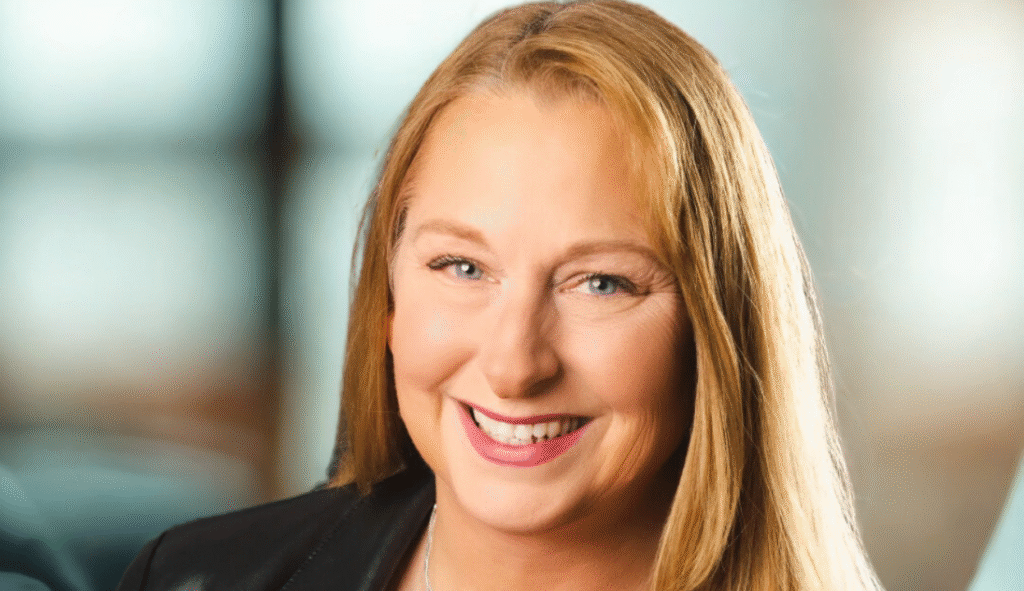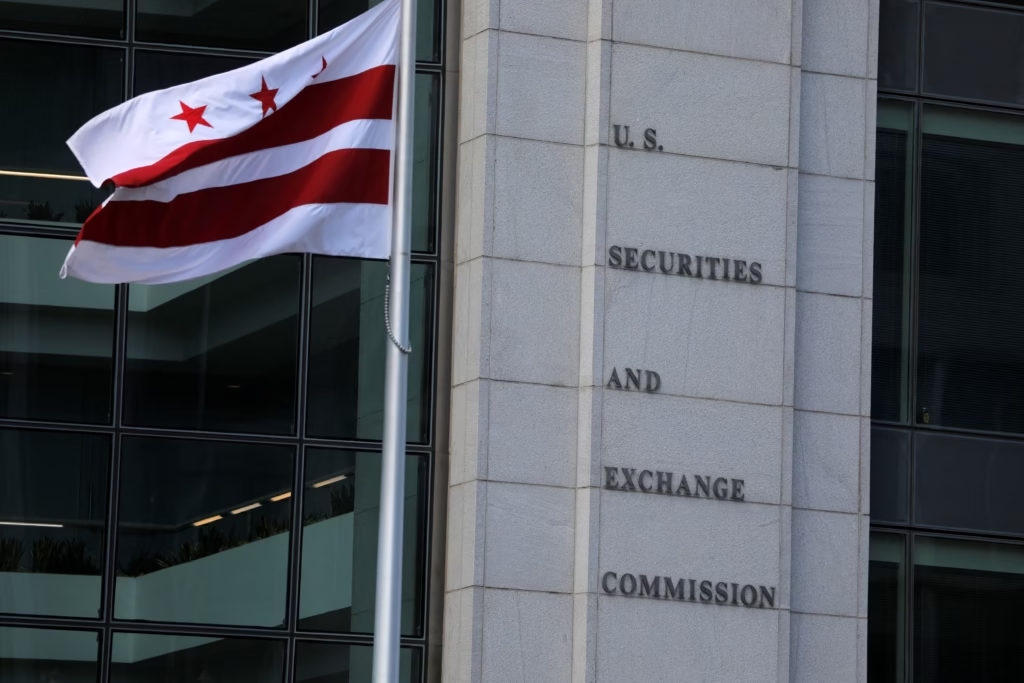Protected: UPCOMING NEWS

There is no excerpt because this is a protected post.
DOJ Seeks $11M in Civil Forfeiture Over Miami DME Fraud Case

August 22, 2025 | JacobiJournal.com — Federal prosecutors are moving to seize nearly $11 million in assets tied to an alleged Miami DME fraud scheme that billed Medicare for over $33 million in medically unnecessary equipment. The U.S. Department of Justice (DOJ) says the case highlights a growing enforcement focus on healthcare fraud in the durable medical equipment sector. Miami DME Fraud Involving Unnecessary Billing The DOJ’s civil forfeiture complaint alleges that two Miami-based suppliers submitted false claims for orthotic braces and other devices that patients did not need or never received. Prosecutors say these actions violated federal healthcare fraud statutes and exploited taxpayer-funded programs. DOJ Traces Fraud Proceeds to $11 Million in Assets Investigators allege the targeted funds in this Miami DME fraud case were routed through multiple accounts and shell companies to obscure their origin. The DOJ is seeking to seize the money as proceeds of the fraudulent billing scheme. Federal Crackdown on Miami DME Fraud Schemes The DOJ has intensified enforcement actions against Miami DME fraud operations, citing the sector’s high risk for abuse. Officials say these cases protect Medicare’s financial integrity and deter future fraudulent billing practices. Source: U.S. Department of Justice. FAQs: About Miami DME Fraud What is Miami DME fraud? It refers to schemes in Miami involving durable medical equipment suppliers who bill Medicare for unnecessary or unprovided devices. How does civil forfeiture apply to Miami DME fraud cases? Civil forfeiture allows the government to seize assets tied to the fraud, even without a criminal conviction, if it can prove the connection in court. Why is Miami a focus for DME fraud enforcement? Miami is a high-priority area for fraud investigations due to the concentration of DME suppliers and history of large-scale Medicare fraud cases. Stay informed on major healthcare fraud cases and legal developments. Subscribe to JacobiJournal.com for exclusive updates, expert insights, and in-depth analysis. 🔎 Read More from JacobiJournal.com:
Demand for Medical Evaluators Outpaces Growth in CA Workers’ Comp System

April 28, 2025 | JacobiJournal.com — Demand for medical evaluators in California’s workers’ compensation system continues to climb, revealing a growing gap between available resources and case volume. Although the state has seen a 16% increase in qualified medical evaluators (QMEs) since 2019, the latest report shows that the demand for medical evaluators is rising at an even faster pace. This imbalance is leaving injured workers, employers, and claims administrators grappling with longer delays in the resolution of disputes. Evaluator Numbers Rise After Payment Structure Reform According to an analysis by the California Workers’ Compensation Institute (CWCI), the number of state-certified evaluators climbed from 2,561 in 2019 to 2,972 in 2024. Much of this growth followed the 2021 overhaul of California’s medical-legal fee schedule. Previously, medical-legal evaluations operated under a complex three-tiered payment system. However, reforms introduced a flat fee model with additional compensation for record reviews and certain specialties. These changes were designed to improve financial incentives and attract more physicians to meet the rising demand for medical evaluators statewide. Demand Surges Despite More Evaluators Nevertheless, panel requests — which are filed when disputes arise over issues like injury causation, disability levels, or treatment plans — grew even faster than the evaluator pool. Between 2019 and 2024, panel requests jumped by 17%, and from 2021 to 2024 alone, they surged by 32.7%, CWCI reported. Thus, while the evaluator workforce expanded, the intensified demand has undercut availability gains, leaving injured workers and claims administrators grappling with longer wait times. Specialty Shortages Create Additional Strains The report further highlights that although some specialties added more evaluators, they still struggled to meet rising panel demands. For example: Worryingly, psychology was the only specialty where evaluator numbers actually declined, dropping 8% over the six-year span. These specialty shortages signal deeper systemic pressures, particularly in mental health-related evaluations where claims complexity often requires specialized expertise. Outlook: Reform Efforts Must Continue The CWCI analysis underscores that payment structure reforms, while necessary, are not sufficient on their own. Additional measures may be needed to ensure timely access to qualified evaluators, especially as the demand for medical evaluators continues to grow and workers’ compensation disputes become more intricate and medically complex. Source: CWCI FAQs: Demand for Medical Evaluators in California Why is the demand for medical evaluators increasing in California? Disputes over injury causation, disability, and treatment plans have surged, driving a sharp rise in panel requests for qualified medical evaluators. Which specialties face the biggest shortages in California’s workers’ comp system? Specialties like psychology, neurology, psychiatry, and internal medicine face high demand, with psychology evaluator numbers actually declining. How is California addressing the shortage of medical evaluators? Reforms to the medical-legal fee schedule aim to improve participation, but experts say additional measures are needed to meet growing demand. What impact does the shortage of evaluators have on injured workers? Limited access to evaluators often leads to longer wait times, delaying case resolutions and potentially prolonging recovery periods for injured workers. Where can I find official information about this? The California Division of Workers’ Compensation (DWC) provides official updates, guidelines, and resources for medical evaluators at the Department of Industrial Relations website. Stay updated on workers’ comp reforms, labor law developments, and medical-legal news at JacobiJournal.com. 🔎 Read More from JacobiJournal.com:
Marketer Susan Postnikoff Linked to CA Workers’ Comp Ghostwriting Scheme

April 21, 2025 | JacobiJournal.com – California Workers’ Comp Ghostwriting Scheme: Jacobi Journal has learned of an investigation into a scheme at DWC Pros, a California Medical Legal Practice Management Company, to ghostwrite QME reports for its doctors. The mastermind is said to be Peggy Susan Postnikoff, a Canadian immigrant and former Marketing Director at DWC Pros. Postinikoff now holds a similar marketing position with Spectrum Medical Evaluations in El Cajon, CA. The investigation follows Pasadena doctor Kevin Tien Do’s guilty plea related to a $3 million conspiracy to defraud California’s Subsequent Injuries Benefit Trust Fund (SIBTF). Jacobi contacted DWC Pros and Spectrum Medical Evaluations employees about the ongoing “ghostwriting” investigation. Both organizations claimed Postnikoff is merely a consultant and not affiliated as an employee. However, our investigation uncovered direct involvement. Michelle Kaminer, a DWC Pros employee, described her role as writing and editing medical-legal reports by synthesizing various medical documents, including diagnostic studies and physician notes, and performing copy editing, proofreading, and fact-checking. Ms. Kaminer admitted that Postnikoff pressured her and other staff to engage in high levels of medical report writing that violates California Labor Code Section 4628, so that Postnikoff could attract new doctors to the firm and earn a sales commission. Sources also indicate that these unlawful practices contributed to the departure of several prominent QME physicians from DWC Pros, including orthopedic surgeons John Burge, Daniel Davis, Sanagaram Shantharam, Keith Robertson, Casey Pyle, Stephan Sweet, and Sahil Vohra. This is not the first time Postnikoff has been linked to wrongdoing. She was the subject of a criminal investigation into Mortgage Fraud, affiliated with the investigations of Stephan Stepaniuk and Jennifer White for marketing kickbacks, and now faces questions related to her citizenship status. To date, Postnikoff has eluded prosecution and now works with Spectrum Medical Evaluations in a similar marketing position. Jacobi recommends that Claims Adjusters operating in California be on the lookout for ghost-written QME reports. A ghost-written QME report can be challenged through Deposition and ultimately thrown out with reimbursement denied. Please click on the link below for tips in identifying ghostwritten reports: How To Spot a Ghost Written Medical Report Stay informed — visit the California Division of Workers’ Compensation website to understand QME compliance rules and how to challenge unlawful medical-legal reports. FAQs: California Workers’ Comp Ghostwriting Scheme What is a California Workers’ Comp ghostwriting scheme? A California Workers’ Comp ghostwriting scheme involves unlicensed individuals drafting QME medical-legal reports, violating Labor Code Section 4628. How can claims adjusters detect ghostwritten QME reports? Claims adjusters can spot ghostwritten QME reports by identifying inconsistencies in medical opinions, repeated template language, and mismatched physician signatures. Why is ghostwriting in California Workers’ Comp cases illegal? Ghostwriting violates California Labor Code Section 4628, which requires that QME physicians personally prepare their reports to maintain accuracy and integrity. What should I do if I suspect a California Workers’ Comp ghostwriting scheme? Report suspicions to the California Division of Workers’ Compensation (DWC) and preserve all documentation for investigation. Can a ghostwritten QME report in a California Workers’ Comp ghostwriting scheme be thrown out? Yes. If proven part of a ghostwriting scheme, a QME report can be excluded from evidence, with related reimbursement claims denied by the insurer or the DWC. Get the latest updates on California Workers’ Comp fraud, legal cases, and industry investigations delivered straight to your inbox. Subscribe to JacobiJournal.com and never miss a critical story. 🔎 Read More from JacobiJournal.com.
California Bill: Insurers Notify Owners for Aerial Inspection

April 3, 2025 | JaocbiJournal.com — A new California bill, Assembly Bill 75 (AB 75), would require insurance companies to notify homeowners at least 30 days in advance before conducting aerial imaging inspections. The bill also mandates that insurers provide policyholders with instructions on how to request access to the aerial photos taken of their property. Transparency in Insurance Inspections The bill, authored by Assemblymember Lisa Calderon (D-Whittier), aims to increase transparency in insurance inspections and help homeowners retain affordable coverage. Calderon, who chairs the Assembly Insurance Committee, emphasized the need for this legislation amid rising non-renewals and cancellations. California Bill “We are in the middle of an insurance crisis, and Californians are facing non-renewals or policy cancellations, sometimes without justification. AB 75 empowers homeowners, especially those at risk of losing their policies due to undisclosed inspection practices,” Calderon said. Concerns Over Aerial Imaging Aerial imaging has become a widely used tool in the insurance industry for assessing property risk and processing claims. However, many policyholders have expressed concerns over coverage losses tied to aerial photos taken without their knowledge. Upcoming Committee Hearing AB 75 is scheduled for a hearing before the Assembly Insurance Committee on Wednesday at 9:30 a.m. (PST). If passed, the bill could introduce greater accountability in insurer inspections and provide homeowners with a clearer understanding of how aerial imagery affects their policies. Source: Insurance Journal FAQs: California Bill on Insurance Aerial Inspections What does the new California bill require from insurers? The bill requires insurance companies to notify homeowners at least 30 days before conducting aerial imaging inspections. How will the California bill affect policyholders? It provides homeowners with transparency and access to aerial photos used in risk assessments, helping them protect coverage. Why was the California bill introduced? It was introduced to address rising non-renewals and cancellations, ensuring homeowners are not blindsided by inspection practices. When will the California bill be reviewed? The bill is scheduled for a hearing before the Assembly Insurance Committee, where lawmakers will determine its progress. Stay updated on major insurance reforms and fraud cases shaping the future of coverage. Subscribe to JacobiJournal.com for weekly legal and insurance news. 🔎 Read More from JacobiJournal.com:
San Diego Construction Firm Penalized $157K for Deadly Trench Collapse

March 31, 2025 | JacobiJournal.com – The California Division of Occupational Safety and Health (Cal/OSHA) fined W.A. Rasic Construction, a San Diego construction firm, $157,500 for multiple violations of safety regulations. This fine follows a fatal trench collapse on August 28, 2024, in which an employee tragically lost their life while working in an unprotected excavation. What Happened: Fatal Trench Collapse in San Diego On August 28, 2024, at around 3:00 a.m., a worker was inside a 17-foot-deep trench at the construction site when the trench suddenly collapsed. The collapse displaced a concrete pipe, pinning the worker and causing fatal injuries. Cal/OSHA’s investigation revealed several serious violations related to excavation and trench safety. Cal/OSHA Findings: Serious Violations at the San Diego Construction Site Several critical safety violations contributed to the fatal incident: Cal/OSHA Chief’s Statement Cal/OSHA Chief Debra Lee emphasized the importance of enforcing safety regulations: “No worker should lose their life due to preventable safety failures. We will continue to enforce trench safety rules and hold employers accountable.” Workers’ Rights and Employer Appeals Employers, including San Diego construction firms, have the right to appeal any Cal/OSHA citation. Appeals must be filed within 15 working days. For further details, visit the Cal/OSHA Appeals Page. Additionally, workers, regardless of immigration status, are protected under Cal/OSHA regulations. They can file confidential complaints with Cal/OSHA’s district offices if they encounter any safety hazards. FAQs: San Diego Construction Firm Penalized Why was the San Diego construction firm penalized by Cal/OSHA? The San Diego construction firm penalized received $157K in fines for failing to provide cave-in protection, conduct inspections, and implement a safety program. What safety violations were linked to the San Diego construction firm penalized by Cal/OSHA? Violations included no Injury and Illness Prevention Program, inadequate trench inspections, and lack of protective systems against cave-ins. Can a construction firm penalized by Cal/OSHA appeal its citation? Yes. Employers have 15 working days to appeal Cal/OSHA citations through the Cal/OSHA Appeals Board process. How can workers report unsafe conditions at a construction firm penalized for safety violations? Workers can confidentially report hazards to Cal/OSHA district offices, regardless of immigration status, to protect workplace safety. Stay informed on workplace safety enforcement and fraud investigations. Subscribe to JacobiJournal.com for ongoing updates on Cal/OSHA penalties, legal cases, and compliance news. 🔎 Read More from JacobiJournal.com:
SEC Enforcement Priorities Shift Under New Leadership

March 26, 2025 | JacobiJournal.com — SEC Enforcement Priorities are shifting back to traditional enforcement cases under the U.S. Securities and Exchange Commission’s (SEC) new leadership, emphasizing individual accountability and protecting vulnerable investors. Sam Waldon, the agency’s acting enforcement director, highlighted this shift during a securities industry event on Monday. Shift Away from Novel Enforcement Theories In recent years, the SEC explored novel enforcement theories, including the groundbreaking 2021 “shadow trading” case, which resulted in a successful conviction. However, with Republicans taking control of the agency in January, the SEC has moved away from pursuing such innovative approaches. “Creativity is probably not where we want to be,” Waldon stated, indicating a return to established enforcement priorities such as insider trading, accounting fraud, and cases involving disclosure violations. Emphasis on Individual Accountability Waldon stressed that cases focused on individual wrongdoing would take center stage. “It’s always a priority, but I do think that those are cases that are going to be received better by this commission,” he added. This signals a renewed focus on holding individual violators accountable for financial misconduct. Focus on Retail Investor Fraud and Emerging Technologies In addition to insider trading and disclosure fraud, the SEC will remain vigilant about protecting retail investors and addressing fraud involving emerging technologies. As technology-driven financial platforms expand, the agency is expected to monitor these developments closely. Cryptocurrency Enforcement Eases Since January, the SEC has softened its stance on cryptocurrency enforcement, pausing or dropping several high-profile cases against cryptocurrency firms. The agency also scaled back its enforcement staff’s ability to initiate formal investigations without obtaining commission approval. When questioned about the impact of this change, Waldon downplayed concerns. “It’s too early to tell,” he remarked, suggesting that formal approvals may still be granted through streamlined processes. Paul Atkins to Testify Before Congress Paul Atkins, appointed by former President Donald Trump to lead the SEC, is set to testify before Congress on Thursday. Industry experts expect his remarks to shape upcoming SEC Enforcement Priorities and promote policies offering Wall Street greater regulatory relief. Source: U.S. Securities and Exchange Commission – Official Website FAQs: SEC Enforcemaent Priorities What are the current SEC enforcement priorities in 2025? The SEC is focusing on insider trading, accounting fraud, disclosure violations, and protecting retail investors. How has new leadership influenced SEC enforcement priorities? With Republicans in control, the SEC is moving away from novel theories and emphasizing traditional enforcement cases. Are cryptocurrency cases still part of SEC enforcement priorities? The SEC has scaled back aggressive cryptocurrency enforcement, pausing several high-profile cases in 2025. Why is individual accountability central to SEC enforcement priorities? New leadership stresses holding individuals accountable, signaling stronger consequences for financial misconduct. Stay ahead of financial regulation, enforcement trends, and Wall Street oversight. For the latest updates on financial regulations and enforcement trends, visit JacobiJournal.com. Read More from JacobiJournal.com
California Insurance Bailout Risk Grows with Fire Danger

March 25, 2025 | JacobiJournal.com – California Insurance Bailout: As Los Angeles residents recover from one of the costliest natural disasters in U.S. history, California’s insurer of last resort, the FAIR Plan, faces mounting financial strain. With another hot and dry summer approaching, the risk of a future bailout looms large, potentially forcing state residents to cover additional costs. FAIR Plan Assessment Strains Resources Last month, the FAIR Plan required major insurers like State Farm, Allstate Corp., and Chubb Ltd. to contribute a combined $1 billion to replenish its reserves. This measure, known as an assessment, provided a rare glimpse into the program’s precarious financial health. California Insurance Bailout Little Cushion Left for Future Disasters Only three months into 2025, the FAIR Plan has little cash left to cover another potential disaster. California faces wildfires year-round, raising the possibility of additional assessments. “The risk is really clear,” said Sridhar Manyem, head of industry research at AM Best, a credit-ratings agency. “Depending on the severity of the next wildfire, there is the possibility of a future assessment.” Private Insurers Could Pass Costs to Policyholders Under newly updated regulations, private insurers must cover assessments. However, they can seek permission to pass up to half of the first $1 billion to policyholders in a given year. Beyond that threshold, policyholders may bear the full burden. Consequently, assessments could drive up premiums for California homeowners. California Insurance Bailout Climate Change Deepens Insurance Market Turmoil The growing financial pressures underscore the increasing risks faced by California property owners. Climate change is heightening uncertainty in the insurance market. The January Palisades and Eaton fires erupted just weeks after new state regulations took effect, designed to ease the crisis caused by insurers limiting new policies or exiting California altogether. State Farm’s 22% Emergency Rate Hike Adds Pressure State Farm, California’s largest home insurer, recently received provisional approval for a 22% emergency rate hike. The company cited multibillion-dollar payouts from the Los Angeles fires as a threat to its balance sheet and the broader insurance market. Utility Equipment Possibly Linked to Eaton Fire Pedro Pizarro, CEO of Edison International, acknowledged that the company’s equipment might have played a role in the Eaton Fire. “California will always face some risk of a catastrophic fire,” Pizarro said, warning that these risks will create costs for consumers. FAIR Plan’s Financial Shortfall Poses Bigger Threat The FAIR Plan estimates liabilities related to the Palisades and Eaton fires at about $4 billion. Unlike private insurers, the FAIR Plan holds less cash because it covers high-risk properties that private insurers reject. This leaves it vulnerable to catastrophic events. If the FAIR Plan held reserves similar to private insurers, premiums would become unaffordable, said Dave Jones, California’s insurance commissioner from 2011 to 2019. Victoria Roach, FAIR Plan’s president, echoed this concern last year, warning that “our rates are not adequate.” Reinsurance Deductible Exceeds Available Cash In a February letter attached to the assessment order, Roach disclosed that the FAIR Plan faces a $900 million reinsurance deductible and must pay up to $3.5 billion (including the deductible) to access full reinsurance coverage. The plan only had $510 million of unallocated cash available, leaving a $400 million gap that could trigger another assessment. Consumer Advocates Warn of Growing Risks Carly Fabian, a policy advocate for Public Citizen, called the funding gap “pretty concerning” and warned that it “pretty much guarantees another assessment.” The FAIR Plan currently estimates that 45% of its claims from the fires are total losses. However, Jones suggested this percentage might be too low, potentially increasing the need for more funds. Consumer Watchdog Challenges Insurer Cost-Shifting A legal battle is brewing over the recent assessment. Consumer Watchdog, an advocacy group, called the charge a bailout for big insurers. The group has vowed to challenge insurers in court if they try to pass assessment costs to policyholders. “We don’t think it’s legal,” said Jamie Court, president of Consumer Watchdog. He argued that private insurers are allowed to operate in California based on the understanding that they will help maintain the FAIR Plan’s solvency. California Insurance Commissioner Defends New Regulations However, the California Department of Insurance rejected that view. Insurance Commissioner Ricardo Lara stated that holding insurers fully accountable for FAIR Plan assessments would drive more companies out of California. This would make insurance “much more unaffordable,” he warned during a hearing last week. Deputy Commissioner Michael Soller emphasized that the state’s new regulations incentivize insurers to take on more high-risk policies. He noted that companies can now use new risk-assessment tools only if they increase their coverage of high-risk properties. Goal: Shift Californians Back to Regular Insurance Market Soller stressed that the state’s ultimate goal is to move Californians out of the FAIR Plan, which offers limited coverage at higher costs, and back into the regular insurance market. “Nobody wants a FAIR Plan policy,” Soller said. FAIR Plan Growth Signals a Worsening Problem As private insurers retreat from California, more consumers have been forced to rely on the FAIR Plan. This shift creates a growing burden not just for homeowners in high-risk zones, but for the entire state insurance market. “The more people that are put into a system that is already struggling, the worse the struggles become,” said Douglas Quinn, executive director of the American Policyholder Association. “These are very, very difficult, challenging times for the insurance industry.” For further details on wildfire risk and insurance regulation, visit the California Department of Insurance. FAQs: California Insurance Bailout What is the California Insurance Bailout and why is it a concern? The California Insurance Bailout refers to financial risks when the FAIR Plan requires insurer assessments, potentially shifting costs to homeowners. How does climate change affect the California Insurance Bailout risk? Climate change intensifies wildfire frequency, increasing the likelihood of FAIR Plan shortfalls and raising the California Insurance Bailout risk. Can insurers pass FAIR Plan assessment costs to policyholders under the California Insurance Bailout system? Yes. Under new rules, insurers can pass up to half
California Approves State Farm’s 22% Rate Hike—With Conditions

March 14, 2025 | JacobiJournal.com — A California insurance rate hike gained provisional approval as Insurance Commissioner Ricardo Lara signed off on State Farm’s request for a 22% homeowners insurance increase. However, the approval remains conditional, as the company must justify the hike with supporting data during a public hearing scheduled for April 8. State Farm’s Response to the Provisional Approval In a statement, State Farm acknowledged the decision but emphasized the need for long-term stability in the California insurance market, noting that the California insurance rate hike was a difficult but necessary step. “While the provisional nature of today’s decision does not provide full certainty, it is a step in the right direction,” the company stated. State Farm also confirmed that it would implement the provisionally approved rate while continuing discussions with the California Department of Insurance (CDI) to establish a sustainable path forward. The insurer reiterated its commitment to transparency, stating, “State Farm General has worked openly and honestly with all parties involved. We will continue monitoring capacity to support risks and build sufficient capital for the future.” Commissioner Lara’s Conditions for Approval Lara has also urged State Farm to halt non-renewals and seek a $500 million capital infusion. He warned that without addressing these financial issues, the California insurance rate hike could fail to deliver meaningful relief for policyholders. If upheld, the rate hikes would take effect on June 1, with increases including: State Farm stopped writing new policies in California in May 2023 and has already non-renewed thousands of existing policies. The Financial Justification for Rate Hikes Earlier this year, Lara had postponed approving the rate hike, instead calling a meeting with the company to obtain more details about its financial situation. At the time, State Farm cited significant underwriting losses as the primary reason for the requested increase. The company reported that for every $1 collected in premium, it has spent $1.26, leading to cumulative underwriting losses of over $5 billion in the past nine years. State Farm cited significant underwriting losses as the primary reason for the California insurance rate hike, pointing to billions in wildfire-related claims and ongoing payout pressures. As of February 14, the company reported 11,400 home and auto claims related to the fires, with payouts exceeding $1.35 billion. Insurers across California have already paid more than $12 billion for losses from the state’s two largest January wildfires, which destroyed tens of thousands of homes. “To resolve this matter, I am ordering State Farm to respond to questions in an official hearing, promoting transparency and a path forward,” Lara stated. “It is evident that other California insurers cannot absorb State Farm’s existing customers, which increases the risk of policyholders being forced onto the FAIR Plan, something we all want to avoid as we implement my Sustainable Insurance Strategy.” Consumer Watchdog’s Opposition to Insurance Rate Hike Consumer Watchdog, a consumer advocacy group, has opposed the emergency rate hike request since its submission. The group welcomed the public hearing, emphasizing that State Farm must provide clear evidence to justify the increase. “The commissioner called a hearing, just as Consumer Watchdog has been urging since State Farm made its unprecedented $900 million ‘emergency’ rate hike request,” the organization stated. “It’s a victory for consumers that State Farm must make its case before a judge. So far, the company has failed to back up its request, and unless they provide compelling proof, the outcome should be a rejection.” The Future of California’s Insurance Market As the state’s largest homeowners insurer, State Farm’s future actions will have broad implications for policyholders. If the rate increase stands, the company may continue operating in California. However, if denied, more non-renewals could follow, adding to the state’s ongoing insurance crisis. For more details on active insurance rate filings and consumer protections, visit the California Department of Insurance. FAQs: About the California Insurance Rate Hike What is the reason behind the insurance rate hike? State Farm cited billions in underwriting losses and wildfire-related claims as the primary drivers of its proposed increase. When will State Farm’s approved insurance rate hike take effect in California? If upheld, the rate hike would take effect on June 1, 2025, impacting homeowners, renters, and condominium policyholders. How does Commissioner Lara’s conditional approval affect policyholders? The conditional approval requires State Farm to justify the hike in a public hearing while halting non-renewals and seeking added financial capital. What role does Consumer Watchdog play in the California insurance rate hike process? Consumer Watchdog opposes the increase, pushing for transparency and requiring State Farm to present strong evidence at the upcoming public hearing. Stay informed on regulatory updates, insurance market shifts, and fraud investigations — subscribe today at JacobiJournal.com for breaking coverage. Read More from JacobiJournal.com
ICW Group Names Mark Moitoso as President to Drive Growth and Expansion

January 29, 2025 | JacobiJournal.com — ICW Group Insurance Companies, a top property and casualty insurance provider, has appointed Mark Moitoso as its new President, effective immediately. In this role, Moitoso will lead underwriting and shared services operations, focusing on business growth, product line expansion, and operational efficiency. Moitoso’s appointment comes at a time when ICW Group is looking to strengthen its market position and enhance operational performance across its nationwide network. Industry analysts note that his extensive background in risk management and team leadership could help the company streamline processes, develop innovative insurance solutions, and better respond to evolving customer needs in the property and casualty sector. Bringing 35 Years of Expertise With more than 35 years of industry experience, Moitoso brings a deep understanding of property and casualty insurance. His career spans multiple leadership roles, where he has successfully built teams and delivered tailored insurance solutions. He takes over the position from Kevin Prior, who will continue serving as CEO. “We’re excited to welcome Mark to our leadership team,” said Prior. “His extensive expertise and strong track record of driving results make him the ideal leader to propel ICW Group forward. We are confident that under his leadership, we will continue delivering top-tier insurance experiences for our policyholders and agent partners.” A Vision for Growth and Operational Excellence Moitoso will also oversee shared services operations, managing more than 1,200 employees nationwide. These teams support policyholders and agents across various product lines, including workers’ compensation and catastrophe coverage. “I am thrilled to join a company dedicated to exceptional customer service and innovation,” Moitoso stated. “ICW Group has built an outstanding reputation for integrity and sustainable growth. I look forward to leveraging my experience to strengthen its foundation and help drive the company to new heights.” A Proven Leader in the Insurance Industry Before joining, Moitoso served as Executive Vice President, Risk Practices at Lockton Companies, working in Kansas City and Atlanta. Previously, he spent 25 years at Liberty Mutual, holding various leadership roles. Based in San Diego, he is a Fellow of the Casualty Actuarial Society and a Member of the American Academy of Actuaries. About ICW Group Headquartered in San Diego, ICW Group Insurance Companies is the largest privately held insurance company in California. The company specializes in Workers’ Compensation, Assumed Reinsurance, and Catastrophe coverage, with a strong focus on helping policyholders reduce claim costs and supporting trusted insurance agents. For further details, read the full announcement from ICW Group. FAQs: About the ICW Group Who is the new President of ICW Group? Mark Moitoso has been named President of ICW Group, bringing more than 35 years of insurance industry experience to the role. What responsibilities will Mark Moitoso have? He will oversee underwriting and shared services operations, focusing on business growth, product expansion, and operational efficiency. Why is leadership change significant? The appointment highlights ICW Group’s commitment to strengthening its market position and delivering value to policyholders and agent partners. What industries does ICW Group primarily serve? ICW Group specializes in property and casualty insurance, including workers’ compensation, assumed reinsurance, and catastrophe coverage. Who is the CEO of ICW Group? Kevin Prior serves as the CEO. He continues in this role while Mark Moitoso assumes the position of President, overseeing underwriting and shared services operations. Who is the founder of ICW? ICW Group Insurance Companies was founded to provide specialized property and casualty insurance solutions in California. The company has grown into the largest privately held insurance provider in the state. Stay ahead of the curve with leadership moves, insurance trends, and fraud updates — subscribe to JacobiJournal.com today and never miss a headline. 🔎 Read More from JacobiJournal.com: